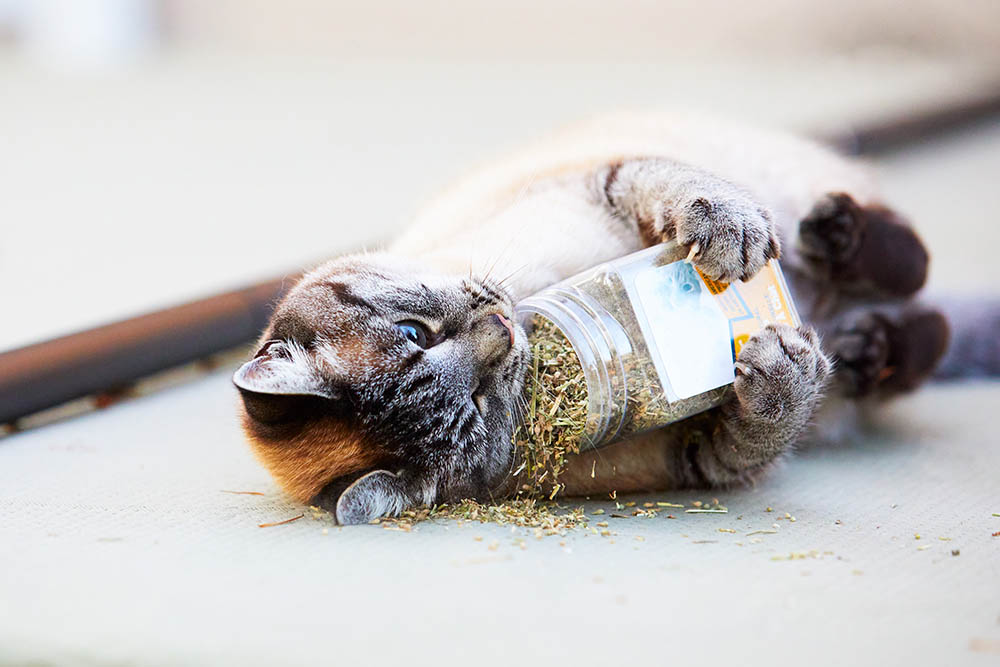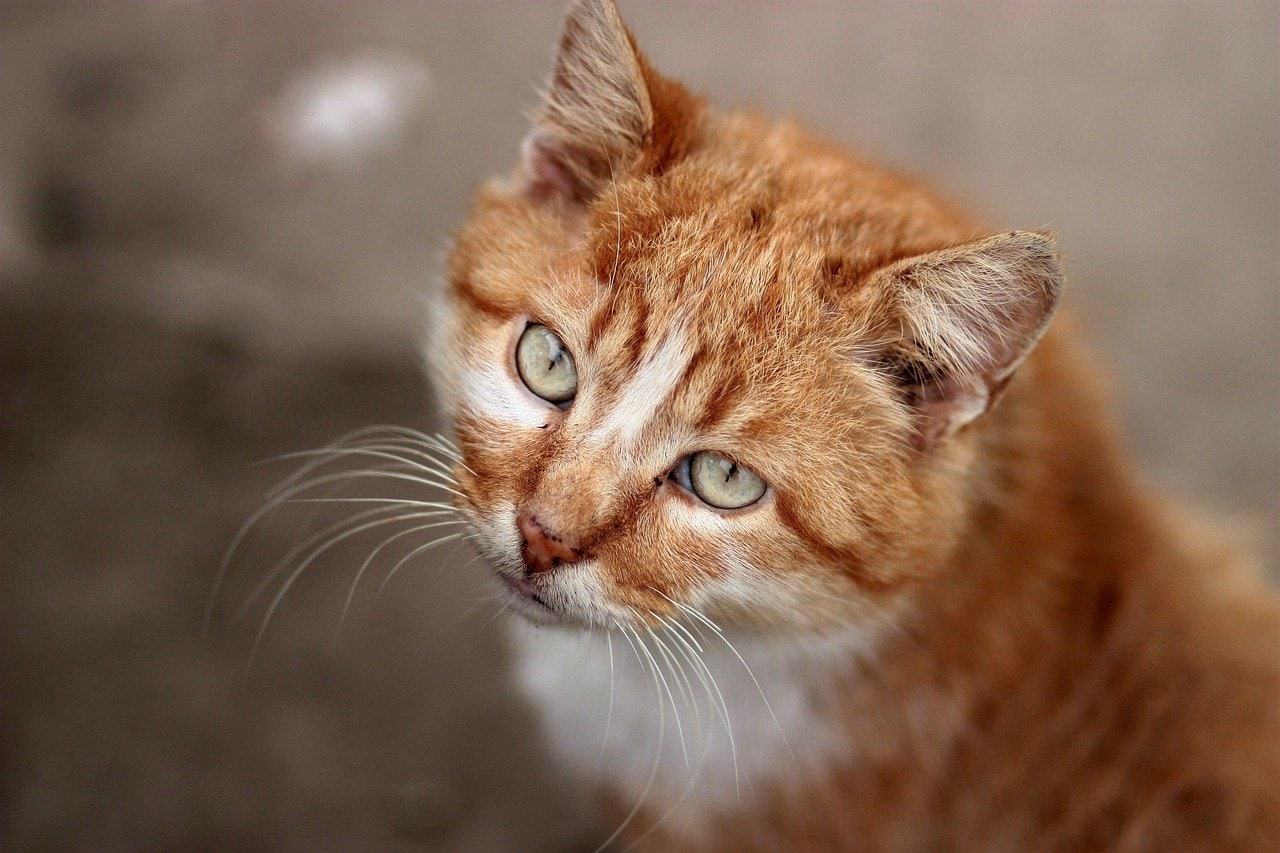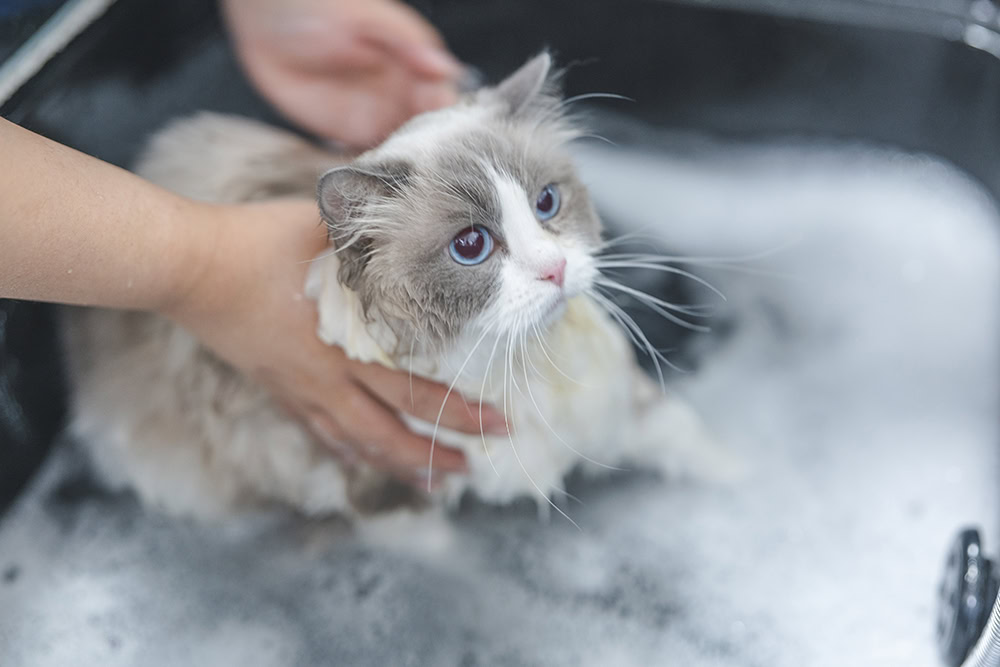VET APPROVED

The information is current and up-to-date in accordance with the latest veterinarian research.
Learn more »Click to Skip Ahead
As a pet owner, you are probably familiar with the often-fascinating reaction most cats have to catnip. As strange as your kitty’s behavior can become, you can feel safe about letting your cat indulge in this vice.
The catnip herb contains nepetalactone, which allures and affects most (but not all) cats. The reaction cats have to these substances is a form of high, causing their pupils to expound, often making them drool or become highly playful. But for how long do these effects of catnip last on your cat? The effects of catnip last for about 10 minutes on average.

How Long Does Catnip Last?
The effects of catnip last anywhere from 5 to 15 minutes from when your cat sniffs one or two of the fragrant herbs. During this period, your kitty temporarily becomes more excited, experiencing a “high” of sorts.
Catnip’s “high” is produced due to the nepetalactone binding to receptors on your cat’s nasal epithelium. The behavioral effects of catnip are not as pronounced if they eat the mint—in fact, eating the mint often produces an opposite effect on them. However, catnip shouldn’t be given to your cat as an oral sedative because in high enough amounts, it is considered toxic for them1.
When your cat returns to their usual self from a catnip high, they get a temporary immunity before they can react to catnip again. The chemical compound that triggers your cat’s reaction can only be generated once every 2–3 hours.
Although there is no known side effect to catnip overdose (from smelling the herb), giving your cat too much is not advisable. As mentioned earlier, if your cat ingests a large amount of herb, they might experience an upset stomach, vomiting, and diarrhea.
Not all cats react favorably to smelling catnip, either. If your cat’s behavior becomes adverse, you shouldn’t offer them catnip in the future.
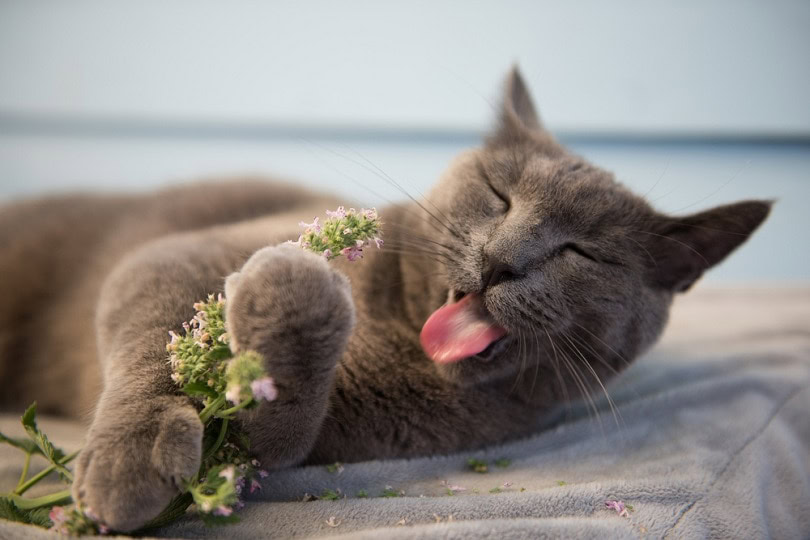
What Is Catnip?
Catnip (Nepeta cataria) is a type of mint typically found in most Asian and European countries, though it has also entered North America. The plant is regarded as an ordinary and invasive weed, but it is also regularly grown in gardens and traditionally used to treat different human health issues.
These include:
- Treating anxiety, headaches, cramps, and digestive problems
- Treating colic in human infant babies
- Treating physical issues arising from arthritic pain
Besides these uses, catnip is commonly known for being “essential for cat bliss”. The herb contains oils and acids that cause a stimulative reaction in your cat’s brain. A chemical known as nepetalactone is the primary cause of your cat becoming crazy for catnip.
There is a degree of controversy surrounding catnip. Intrinsically, it’s not a medicine for cats and doesn’t cure, treat, or manage any feline ailments on its own. It may, however, offer our pets temporary enrichment and is sometimes used to help hospitalized patients relax.
Some people argue that though the effects of a cat on a catnip might be amusing for us, it raises an important question about the ethics of the practice itself. If it’s purely for our amusement, should we even be offering our pet cats catnip? Most veterinarians hold a stance against this, owing to the aforementioned enrichment the herb may offer a pet cat.
The Effects of Catnip
If your feline reacts to catnip, they can behave in various ways. Various behaviors are triggered by nepetalactone. That means your cat might behave differently than other felines you have given catnip before.
The effects of catnip during the duration it lasts for may include:
- Rolling around the floor
- Rubbing against the floor, furniture, or other objects
- Doing somersaults and flips
- Frequent vocalization and meowing
- Jumping around and quickly running
- Agitation and hyperactivity
- Biting, scratching, or wrestling with you
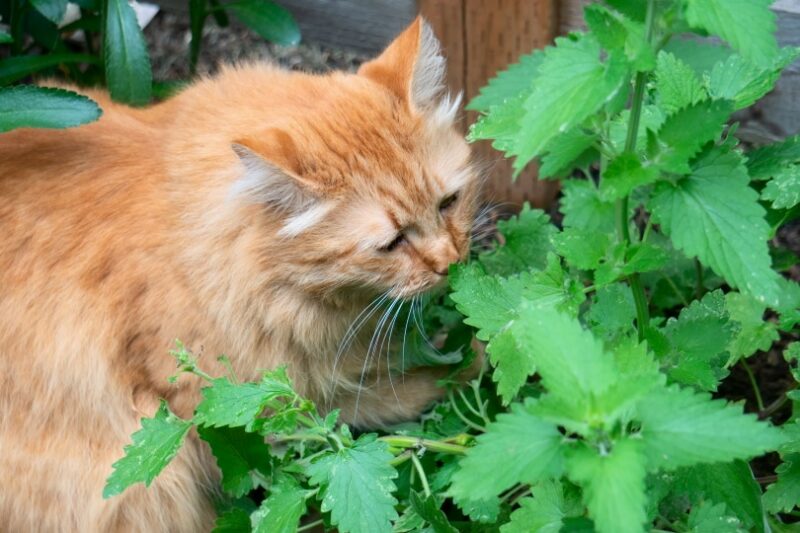

How to Give Your Cat Catnip
Catnip is a versatile plant that comes in various forms. If catnip doesn’t negatively impact your kitty, you can use it for your feline. Here are a few different ways you can give your cat catnip.
1. Catnip Toys
Catnip can really enrich your cat's life, especially if you choose a fun, well-built catnip toy. Our favorite option is Hepper's Catnip Stick Toy, which offers sturdy construction, 100% organic catnip fill, and a great range of colors. These toys are handmade in the USA and feature bite-proof double bagging.
At PangoVet, we've admired Hepper for many years, and decided to take a controlling ownership interest so that we could benefit from the outstanding designs of this cool cat company!
Toys are one of the best ways for your kitty to enjoy catnip since they can deliver it in various ways. Catnip toys may include scratchers, refillable plushies, or balls. This enables you to add fresh catnip frequently to the toys and build a more robust experience for your furry friend. You can often stuff the toys with catnip flakes since these are the most accessible to deposit into a toy.
Or else, you can deliver the catnip to your cat using a roll-on toy that works the same as sprays. You can roll the catnip directly into any surface, such as usual toys, and observe your feline go crazy.
2. Catnip Bubbles
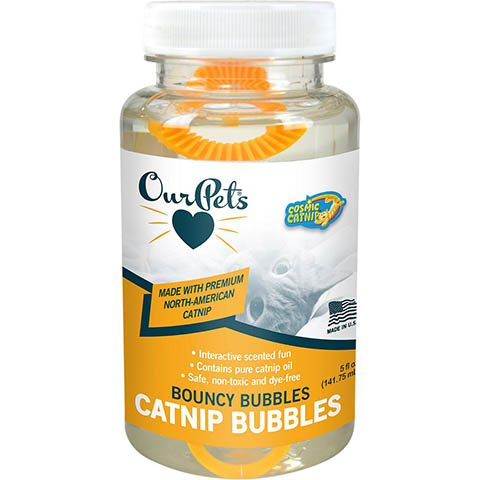
Catnip bubbles such as OurPets Catnip Bouncy Bubbles and Pet Qwerks Incredibubbles are an enjoyable and interactive way to give catnip to your furry friend. You can observe them enjoy the effects while also providing the catnip in an easy and exciting way.
Cats are naturally curious about moving objects, so puffing a catnip bubble in their direction will trigger their instincts. When the cat bursts the bubbles, it will experience the effects of catnip in a safe and stimulating manner.
Catnip bubbles enhance a healthy balance of exercise and fun. They are also one of the most vital types of catnip available since they are made from catnip oil.
Catnip bubbles claim to enhance a healthy balance of exercise and fun for your cat.
3. Catnip Treats
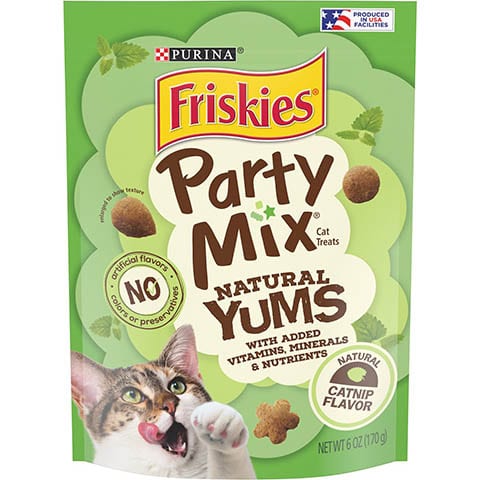
Catnip treats are a popular type of mint that makes it easy to reward your feline for good behavior with a mixture of flavor and fun.
Various treat brands offer catnip treats, which help you pick the amount of catnip you want your cat to receive. Most of the claims of the treat’s effects are not scientifically proven. Depending on the delicacy you offer, your cat may experience the excited or sleepy side of catnip, the mellow, or the social effects.
Anecdotally, most catnip treats will cause your cat to make more purrs and meows since they cannot resist the combination of deliciousness and the chemical reaction that leaves them in high spirits. However, do note that the actual behavior changes require your cat to smell the catnip.
Catnip treats may come in rolled catnip tubes, chewable foods, catnip sticks, or even in the form of cat grass kits that you can plant right on your lawn.
Examples of catnip treats you can give your cat include Temptations Mixups Catnip and Friskies Party Mix Natural Yums.
4. Catnip Sprays
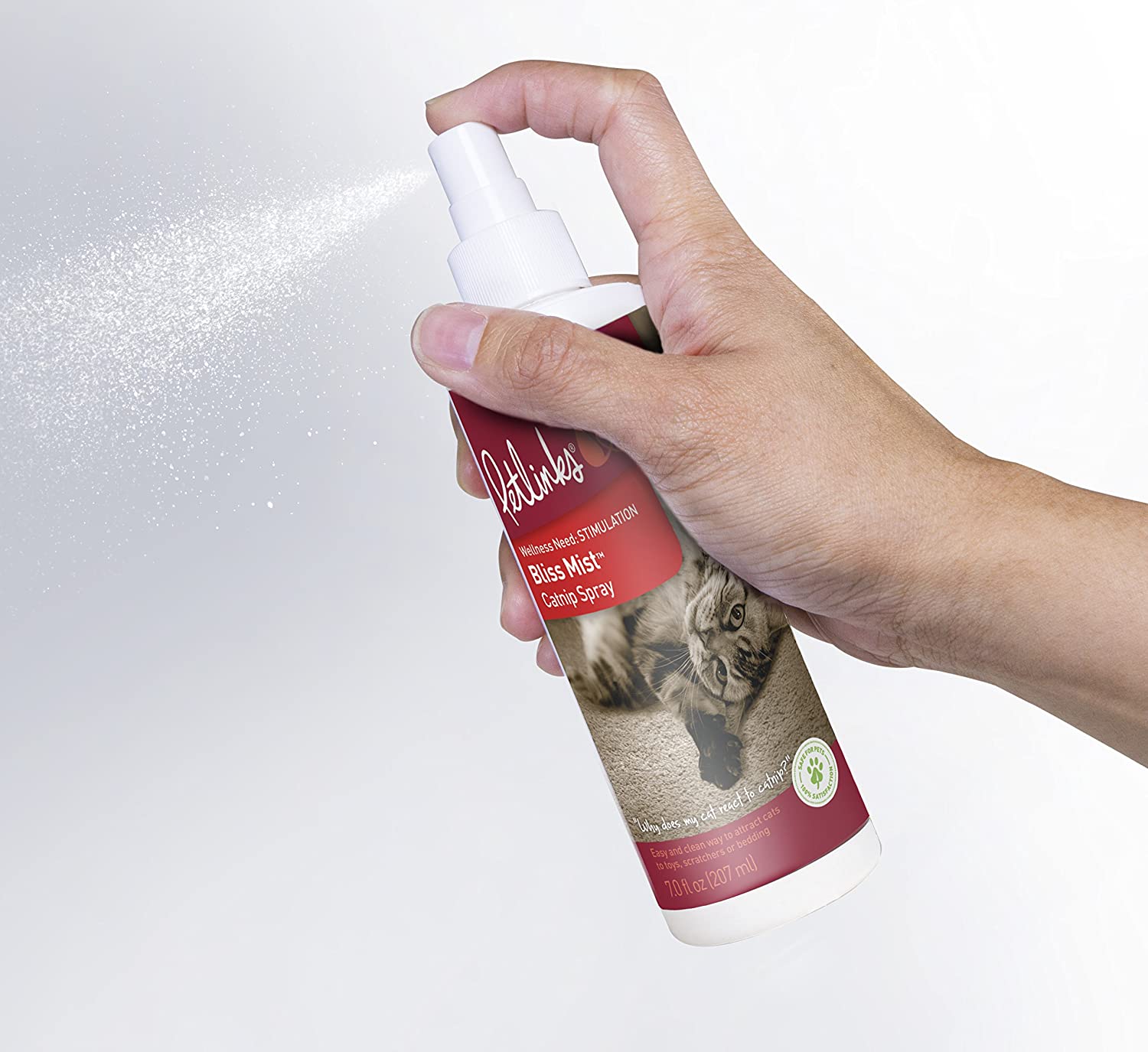
Catnip spray, like Petlinks Bliss Mist Catnip Spray, is an intensive form of the intoxicating herb that will drive your feline crazy when you use it on their bedding, toys, or furniture. When your cat discovers the scent, they will go wild for it.
Your kitty may try to inhale or lick at the catnip wherever you have used the spray. The time the spray’s effect lasts on your cat depends on the brand and quality you are using.
5. Live Plants
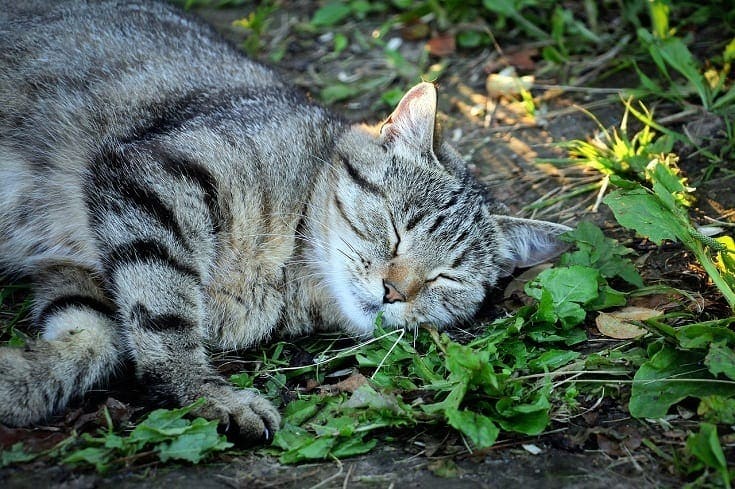
If you want to give your feline catnip in its natural form, then the best way to do so is by adding a live catnip plant to your home.
The live plant is harmless for your kitty to inhale or rub up against it. Catnip is a green herb that typically blossoms in white, blue, pink, or purple colors. Catnip is attractive and produces a soft aroma that will quickly allure your cat.
In addition, the live catnip plant is relatively easy to grow and keep alive. This means that even if you are not an experienced gardener, you can care for catmint easily.


Final Thoughts
Most (but not all) cats do have a behavioral response to catnip. This “high” lasts for around 10 minutes on average. Despite our fondness for the antics our cats display when exposed to catnip, the herb isn’t medically beneficial for them (on a long term basis). However, it may offer our cats some enrichment and help some individuals temporarily, which justifies its use for pets that do not react adversely to it.
Related Reads:
- Is a Catnip Stick Safe for My Cat? What You Should Know!
- Why Your Cat Doesn’t Like Catnip? 3 Likely Reasons & Alternatives
Featured Image Credit: Seattle Cat Photo, Shutterstock
